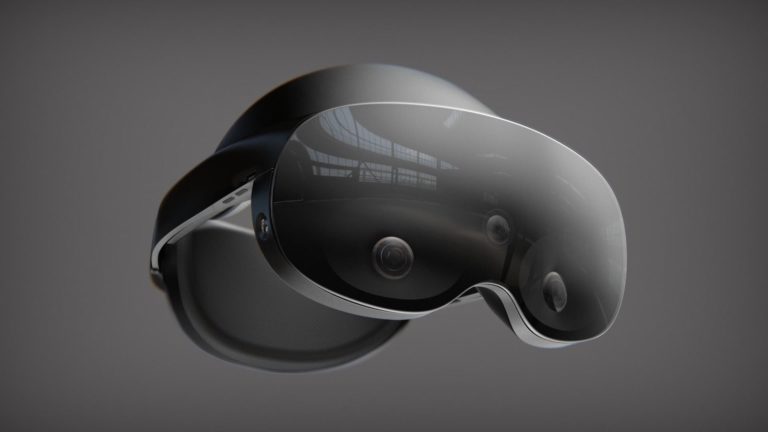
Welcome back to Spatial Beats. This week, we look at Bored Ape’s mishap, metaverse funding, and the latest Meta headset rumors. Let’s dive in…
Bored Ape Metaverse Frenzy Raises $320 Million, Crashes Ethereum. Yuga Labs’ Bored Ape Yacht Club sold parcels of #NFT land to fund the creation of Otherside, a planned Bored Ape community/game with a really awesome trailer. Buyers bid up to $5,800 for 55,000 deeds, plus 2 ETH transaction or gas fees, which skyrocketed to $6,000 (more than the price of the deed itself) during the sale. $320 million represents a lot of users with a lot of money who are taking what is acknowledged by all to be a fun and very speculative bet.
Jon Goldman’s Tower 26 Venture Fund Raises $50M for VR Games, Metaverse. The veteran game investor and former studio executive said his new fund will focus “mostly on VR gaming” but also the metaverse. Goldman was the founder of Foundation 9 Entertainment, which created games based on “Star Wars,” “The Matrix,” “The Simpsons” and “Lord of the Rings.”
Kinetix Raises $11 Million in Seed Funding to Drive User Generated Content in the Metaverse. Paris-based Kinetix, maker of the Kinetix 3D animation platform, has secured $11 Million in seed funding. This funding will be used to expand the platform to new audiences.
Meta’s VR roadmap reportedly plans four new headsets for release through 2024. A report by The Information, citing an internal roadmap, claimed that Meta is planning to release four new VR headsets by 2024. According to its sources, The Information says Project Cambria, now codenamed Arcata, is a higher-end device than its current Quest hardware. The sources also indicate that the new VR HMD will cost around $799, well above the $299 / $399 price for Quest VR headsets. The Information reports a Meta spokesperson told the outlet the price for Cambria would be “significantly higher.” An updated version, currently codenamed Funston, will follow in 2024. Another new headset will use face tracking to animate realistic Codec Avatars by using a combination of on-device sensors to use eye-tracking, mouth-tracking, and AI processing to animate a detailed recreation of the user.
NASA Teams Up with Epic Games and HeroX to Source VR Technology for Future Mars Exploration. HeroX, an open market for crowdsouring, together with Epic Video games, launched a new competition for NASA’s MarsXR Problem. They are seeking contributions to a Digital Actuality (XR) testbed that replicates the experiences and conditions astronauts might encounter on Mars. Top Solutions for Extravehicular Simulations will compete for a $70,000 prize.
Chicago Area Holocaust Museum Use VR To Keep Past Alive. As time passes and it becomes increasingly difficult to document the firsthand accounts of Holocaust survivors as their numbers wane, the Illinois Holocaust Museum and Education Center is using VR to preserve the testimonies of some of the remaining survivors. One of the exhibitions, “The Journey Back: A VR Experience,” is a VR experience led by Holocaust survivors Fritzie Fritzshall and George Brent, who take the visitors through the historical and current-day Auschwitz, Mauthausen and Ebensee concentration camps. The local NBC affiliate described it as “powerful.”
Spatial Partners With Ready Player Me To Bring Full-Body Avatars To Their Platform. The avatar system is used by over 2,000 games and apps, including VR Chat and, now, Spatial as well. Spatial, a cross-platform social platform that launched in 2018, famously used an avatar that was drawn from a user’s social media presence. It is a very effective introduction to the platform that makes everyone say “wow.” But, over time, Spatial users have sought a less realistic version because the flagship avatars are… distracting.
Cannes Film Festival is organizing an immersive experience with Epic Games and Fortnite. Under the ground-breaking experiment, the festival’s famous backdrop will be recreated in Fortnite, allowing gamers to experience Cannes through the eyes of three different characters: a journalist, who will father material and conduct an interview; an actor, who will do an audition with a major director, take part in a photocall and walk the red carpet; or a director who will have to find the pages for a script that have been lost across the city, send them to a producer, gather the team together and climb the steps of the Palais for a film premiere.
VR Dating App Flirtual launches. This is exactly what it sounds like: Tinder for Avatars. Virtual dating is a thing on VR Chat.
Flight Schools Adopt VR Training. This is one of those things that makes so much sense you wonder why it wasn’t done much sooner. After all, the very first VR experience was the analog Link trainer, invented in 1929. It trained 350,000 pilots in WWII on instrument flying.
Dissecting The Metaverse (Charlie Fink/Forbes)
What Developers Have Been Making With Snap’s AR Glasses (David Heany/UploadVR)
What Is Web3? The Confusing Term, Explained (Daniel Van Boom/Cnet)
Web3 Leads Metaverse Companies Into Brave New Virtual Worlds (Brian Deagan/Investors.com)
This Week in XR is now a podcast hosted by Paramount’s Futurist Ted Schilowitz and Charlie Fink, the author of this weekly column. You can find it on podcasting platforms Spotify, iTunes, and YouTube. Watch the latest episode below.
 Charlie Fink is an author and futurist focused on spatial computing. See his books here. Spatial Beats contains insights and inputs from Fink’s collaborators including Paramount Pictures futurist Ted Shilowitz.
Charlie Fink is an author and futurist focused on spatial computing. See his books here. Spatial Beats contains insights and inputs from Fink’s collaborators including Paramount Pictures futurist Ted Shilowitz.

